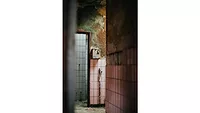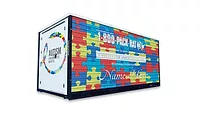Responsible Solutions to Mold Coalition declares August "Mold Awareness Month"
Chicago (July 8, 2009) -- The Responsible Solutions to Mold Coalition (RSMC) has declared August “Mold Awareness Month.” RSMC is a consortium of associations, companies, government and academic organizations dedicated to communicating accurate, science-based information on controlling mold. The group was launched at the International Builders’ Show in Orlando, FL in January of 2006.
“Our message is simple: if you control moisture, you’ll control mold,” said Frank Nunes, Vice Chairman of the organization and Executive Director of the International Institute for Lath and Plaster. “By declaring August ‘Mold Awareness Month,’ we want everyone with an interest in construction and remodeling to know that they can keep moisture out and therefore prevent the onset of mold primarily through attention to detail during the design, construction and remodeling process.”
The Responsible Solutions to Mold Coalition has a highly informative website (www.responsiblemoldsolutions.org) that provides helpful hints on how to keep moisture and mold at bay. Its Technical Committee developed the Guiding Principles for Mold and Moisture Control in two versions: Residential and Commercial. Each section has an interactive model-one of a home and the other a commercial building. By clicking on each of the sections of the home or building, the visitor is able to learn about a relevant Principle. They are also available for downloading or printing. Following are a few of the Principles:
The Responsible Solutions to Mold Coalition comprises 14 companies, associations, government and academic organizations that are dedicated to identifying and communicating accurate, science-based information on mold prevention and control. More information is available at www.responsiblemoldsolutions.org. RSMC is funded by grants from USG Corporation, National Gypsum and American Gypsum.
“Our message is simple: if you control moisture, you’ll control mold,” said Frank Nunes, Vice Chairman of the organization and Executive Director of the International Institute for Lath and Plaster. “By declaring August ‘Mold Awareness Month,’ we want everyone with an interest in construction and remodeling to know that they can keep moisture out and therefore prevent the onset of mold primarily through attention to detail during the design, construction and remodeling process.”
The Responsible Solutions to Mold Coalition has a highly informative website (www.responsiblemoldsolutions.org) that provides helpful hints on how to keep moisture and mold at bay. Its Technical Committee developed the Guiding Principles for Mold and Moisture Control in two versions: Residential and Commercial. Each section has an interactive model-one of a home and the other a commercial building. By clicking on each of the sections of the home or building, the visitor is able to learn about a relevant Principle. They are also available for downloading or printing. Following are a few of the Principles:
- Make sure building materials are kept dry before installation. They should not be delivered to the job site until they are necessary-once on site, they should be kept off the ground and covered with a tarp. Ideally they should be stored inside the home or building to achieve equilibrium with the interior space.
- Flashings around windows, doors and chimneys are critical in deflecting water. They are very inexpensive-and careful installation will insure years if not decades of moisture and mold prevention.
- Roof designs should provide ready egress for water off the roof-avoid valleys that do not drain, or designs that direct water to the top of walls.
- Grade around buildings should always slope away from the structure-buildings may settle over time-inviting water into the basement. Check the grade around houses and buildings-particularly newer ones-every few years. They should be re-sloped if they slant toward the building.
- Drywall should only be installed after the building is closed in. Mold resistant board is a good choice in rooms like kitchens and bathrooms where there is more ambient moisture.
- However, drywall-even mold resistant drywall-should not be used as a tilebacker. Instead, it’s best to use either a cement or cement/fiberglass board as a tilebacker.
- Always install a water-resistive barrier behind the tilebacker that will divert water that passes through tile grout back into the tub or shower pan. Builders and contractors spend countless hours ensuring that roofs are water-tight. The same attention to detail should be devoted to the shower enclosure which will experience much greater “interior rainfall” than the roof does.
The Responsible Solutions to Mold Coalition comprises 14 companies, associations, government and academic organizations that are dedicated to identifying and communicating accurate, science-based information on mold prevention and control. More information is available at www.responsiblemoldsolutions.org. RSMC is funded by grants from USG Corporation, National Gypsum and American Gypsum.
Looking for a reprint of this article?
From high-res PDFs to custom plaques, order your copy today!




